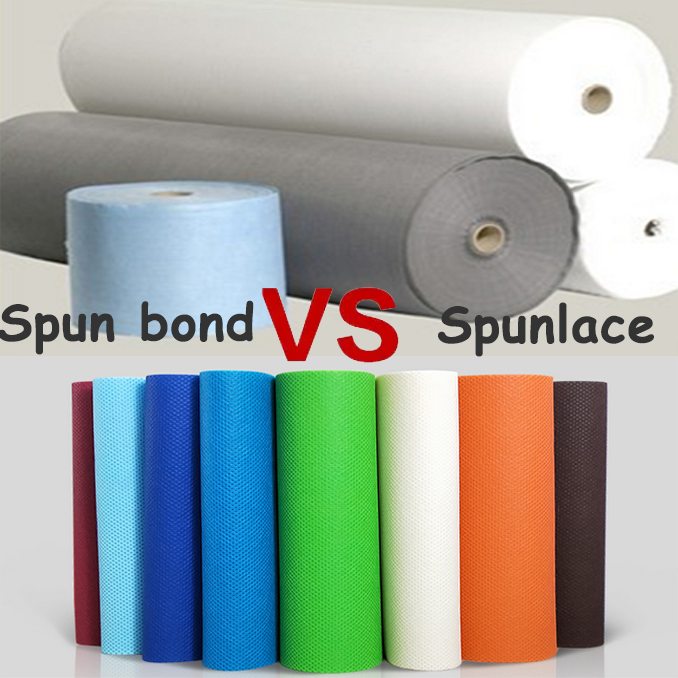Spunbond and spunlace are two types of nonwoven fabrics that are used in a variety of applications. Spunlace Fabric is manufactured by hydro-entangled process, while Spunbond fabric is manufactured by Thermal bonding process, this is called Spunbond Process. Both are kept under Non Woven Fabric, the Spunlace fabric is made up of Visoce, Polyster & Cotton while Spunbond fabric is made up of Polypropylene (PP) fabric.

Spunbond non woven fabric is a type of nonwoven fabric that is produced by extruding molten polymer through a die and onto a conveyor belt. The molten polymer is then cooled and solidified, forming a continuous web of fibers. The fibers are then bonded together using heat, pressure, or chemical treatments. Spunbond fabrics are strong and durable, and are often used in applications such as medical gowns, protective clothing, and filtration media.
Spunlace non woven fabric is a type of nonwoven fabric that is produced by spraying a high-pressure water jet onto a web of fibers. The water jet entangles the fibers, creating a strong bond between them. The resulting fabric is soft and absorbent, and is often used in applications such as wipes, diapers, and feminine hygiene products.
Both spunbond and spunlace fabrics have their own unique advantages and disadvantages. Spunbond fabrics are strong and durable, making them ideal for applications that require strength and durability. However, they are not as soft or absorbent as spunlace fabrics. Spunlace fabrics are soft and absorbent, making them ideal for applications that require softness and absorbency. However, they are not as strong or durable as spunbond fabrics.
In conclusion, spunbond and spunlace are two types of nonwoven fabrics that are used in a variety of applications. The main difference between the two fabrics is the way in which they are produced. Spunbond fabrics are strong and durable, while spunlace fabrics are soft and absorbent. Both fabrics have their own unique advantages and disadvantages, and should be chosen based on the specific application.
